History of Rolex Datejust Watches - A Timeless Legacy
It is nearly impossible to have a discussion about Rolex’s impact on the world on watchmaking without mentioning the iconic Datejust. However, despite its cornerstone position within Rolex's catalog, the Datejust does not receive quite the same degree of attention and acclaim as many of Rolex's other watches, such as the Daytona, Submariner, or GMT-Master.
While the Datejust is not the Rolex collection most known for pulling in six-figure sums at auction, arguably no other watch has played a greater role in the widespread and enduring success of the Rolex brand than the humble and beloved Datejust. For nearly three quarters of a century, the Datejust has served as the backbone of Rolex's catalog, and for many people, a Rolex Datejust wristwatch in the only timepiece that they will ever need.
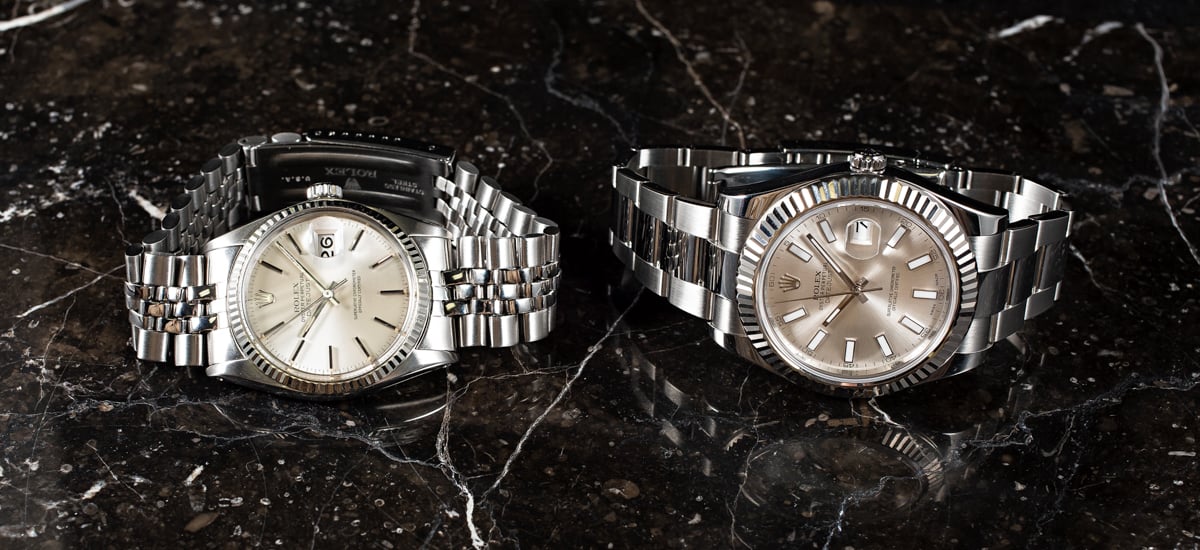
A Quick Rolex Datejust History Lesson
First introduced in 1945 as a means to commemorate the company's 40th anniversary, the Datejust is one of Rolex's oldest collections of watches that still remain in production today. The original Datejust was a 36mm case size. While a date display has become completely standard on most contemporary timepieces, the Rolex Datejust was the world's very first self-winding wristwatch to feature a date window that would automatically change over at midnight. Although this functionality may now seem somewhat commonplace, it was the Datejust that set the standard for how a date complication on a wristwatch should function.
Unlike many of Rolex's other iconic watch lines, the Datejust was not specifically designed or intended for one particular sport, environment, or lifestyle activity. While the Submariner was built for SCUBA divers, and the Daytona for race car drivers, the Datejust is simply a classic and reliable wristwatch, with a timeless and versatile aesthetic, that was designed to be worn everyday, throughout a wide variety of activities.
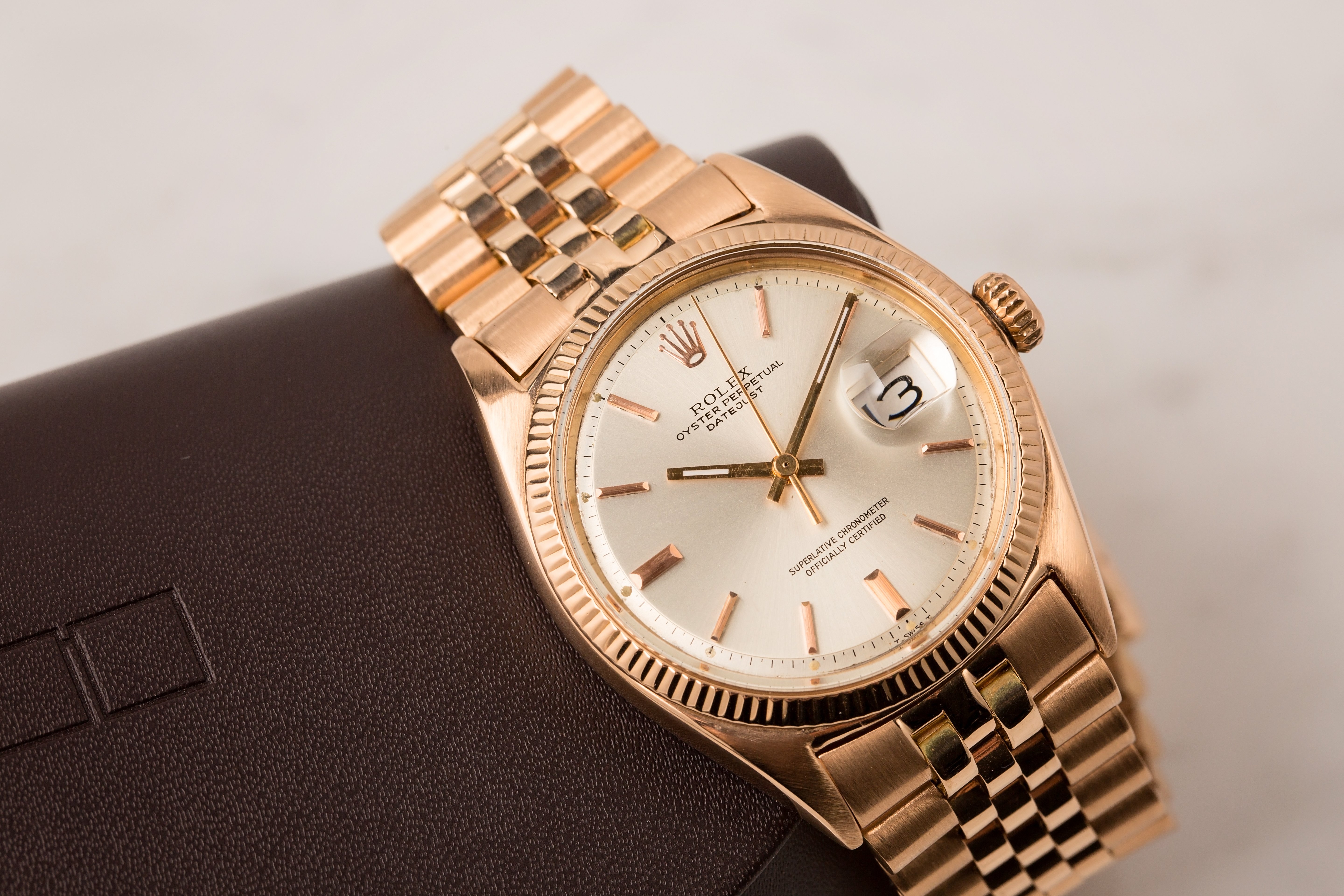
The Rolex Datejust first made its appearance as the reference 4467, and upon its initial release, it was only available in solid 18k yellow gold. It was not until the 1950s, with the reference 5030 and reference 5031 Datejust watches that stainless steel and Rolesor (two-tone) versions became available, and the "Datejust" name actually started to be printed on the dial. You can read more about a Rolex 5030 watch we purchased here.
Additionally, when the Datejust made its debut, it was fitted with a new style of bracelet - the Jubile, which was designed specifically for the Datejust. Originally, the "Jubilee" name was considered for the watch itself (as it was released in celebration of Rolex's 40th anniversary); however it ultimately ended up only being used for the five-piece, metal-link bracelet that has been an option on Rolex Datejust watches ever since.
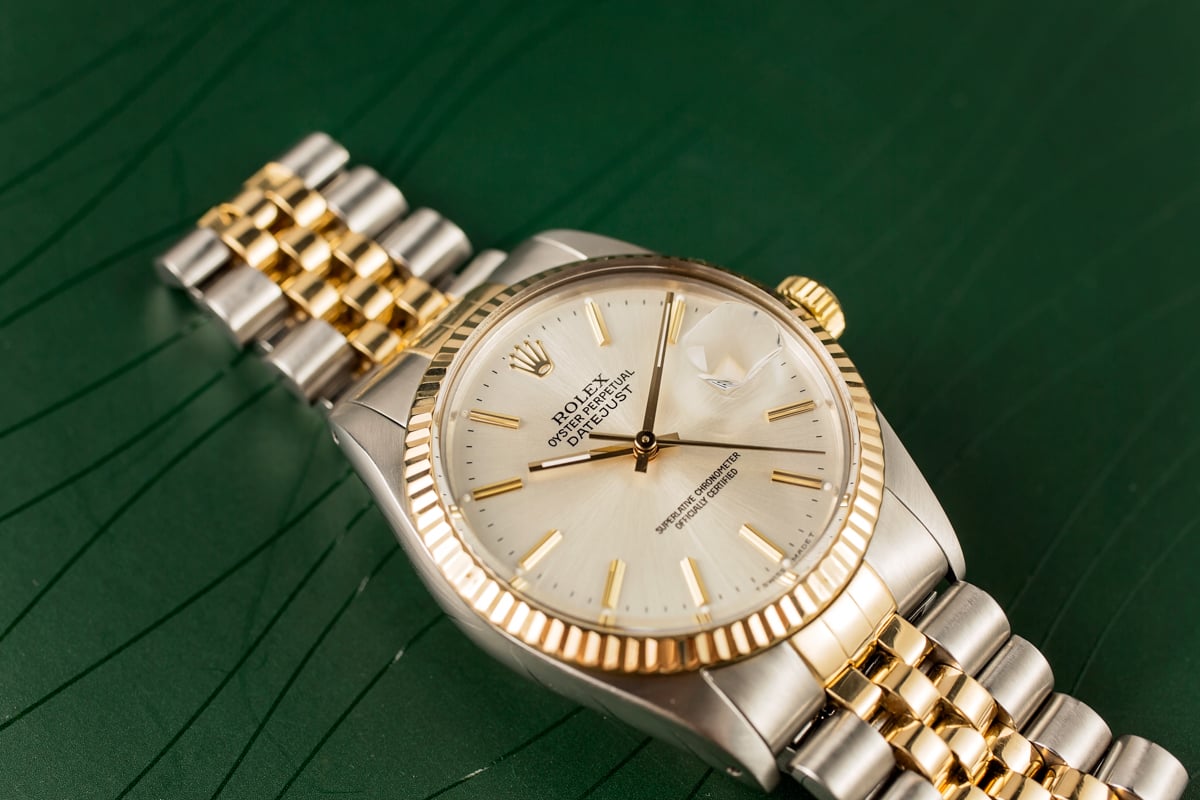
A True Industry Icon
By the late 50s, Rolex had introduced their Caliber 1560 movement, which would usher in a new generation in the form of the reference 160x series. By this point in time, the general appearance of the Datejust was more-or-less set. The “Datejust” name had become a permanent fixture on its dial, and other features such as the hands, bezel, hour markers, and crystal (with cyclops magnification lens) took forms that are still very much present on the modern Datejust watches that Rolex manufactures today.
The next major update to the Datejust came during the late 1970s, when Rolex introduced their Caliber 3035 movement with the reference 160xx series. The new generation of Datejust watches added the 'quickset' date feature, which enabled users to independently adjust the date display without also adjusting the hands displaying the time. Within this generation of Datejust watches, the reference 16013 is the classic Rolesor (stainless steel and yellow gold) version that is fitted with Rolex's iconic fluted bezel.
This generation of Datejust watches retained the 36mm case diameter of its predecessors; however it was marked by a number of subtle design updates that accompanied the new generation of movement. While the crystals on the 160xx generation of Datejust watches are still made from acrylic, the sloped "pie pan" style dial from the previous generation is gone, and replaced by one with a completely flat surface, much like the dials that Rolex still uses today.
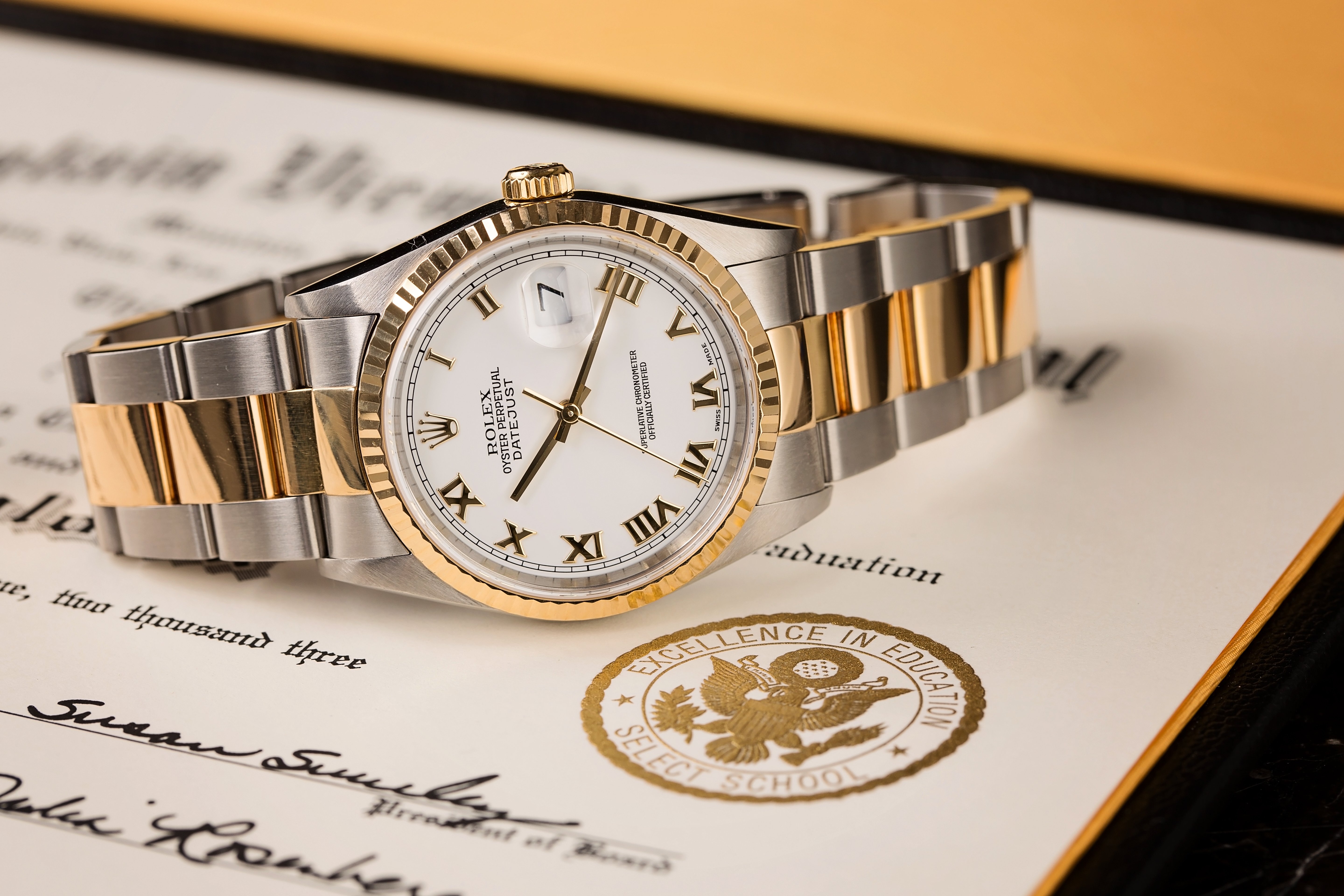
A little over a decade later in 1988, Rolex unveiled a new generation of Datejust watches - the reference 162xx series, which was based around their updated Caliber 3135 movement. Although it was virtually identical to the previous movement generation in terms of functionality, the Caliber 3135 offered a number of slight improvements that promised better timekeeping, reliability, and general day-to-day convenience.
While the reference 162xx series featured a brand-new movement, possibly the most significant change to accompany this new generation of Datejust watches was its crystal. Rather than being constructed from acrylic like all previous generations of Datejust watches, the crystal on the reference 162xx generation is made from scratch-resistant synthetic sapphire, just like the modern watches that Rolex manufacturers today.
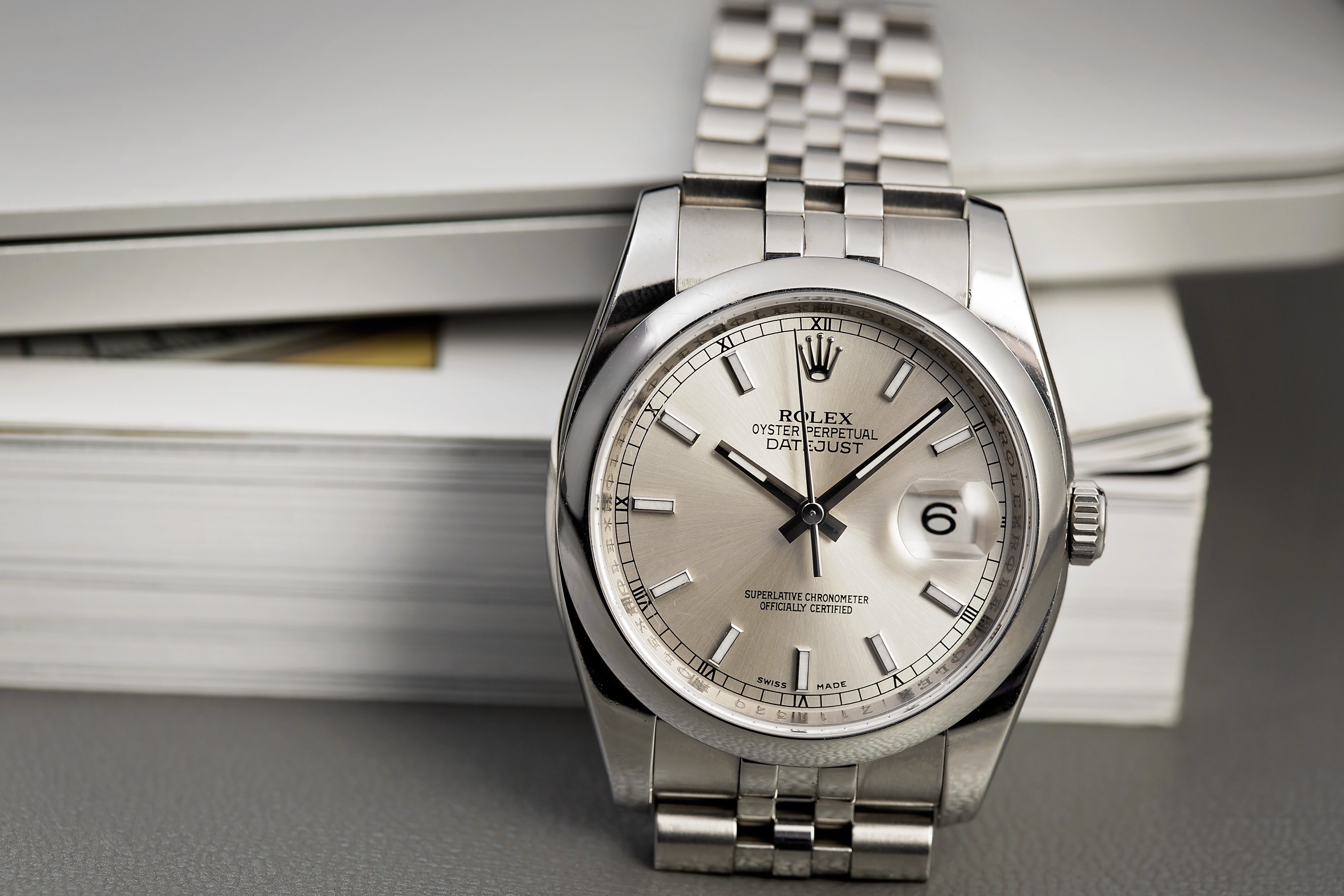
The Datejust II and Modern Evolutions
The next big update came in 2009 with the arrival of the Datejust II. For decades, the standard men's Datejust measured 36mm; however with the introduction of the Datejust II, Rolex had added a 41mm version to be offered alongside the standard 36mm model.
The reference 1163xx generation of Datejust II watches was very much the same timepiece that people had come to know and love; however to fit its larger case, this new generation was fitted with the Rolex’s Caliber 3136 movement. Additionally the Datejust II was exclusively fitted with an Oyster bracelet, unlike the 36mm version, which was available with the option of either an Oyster or a Jubilee bracelet.
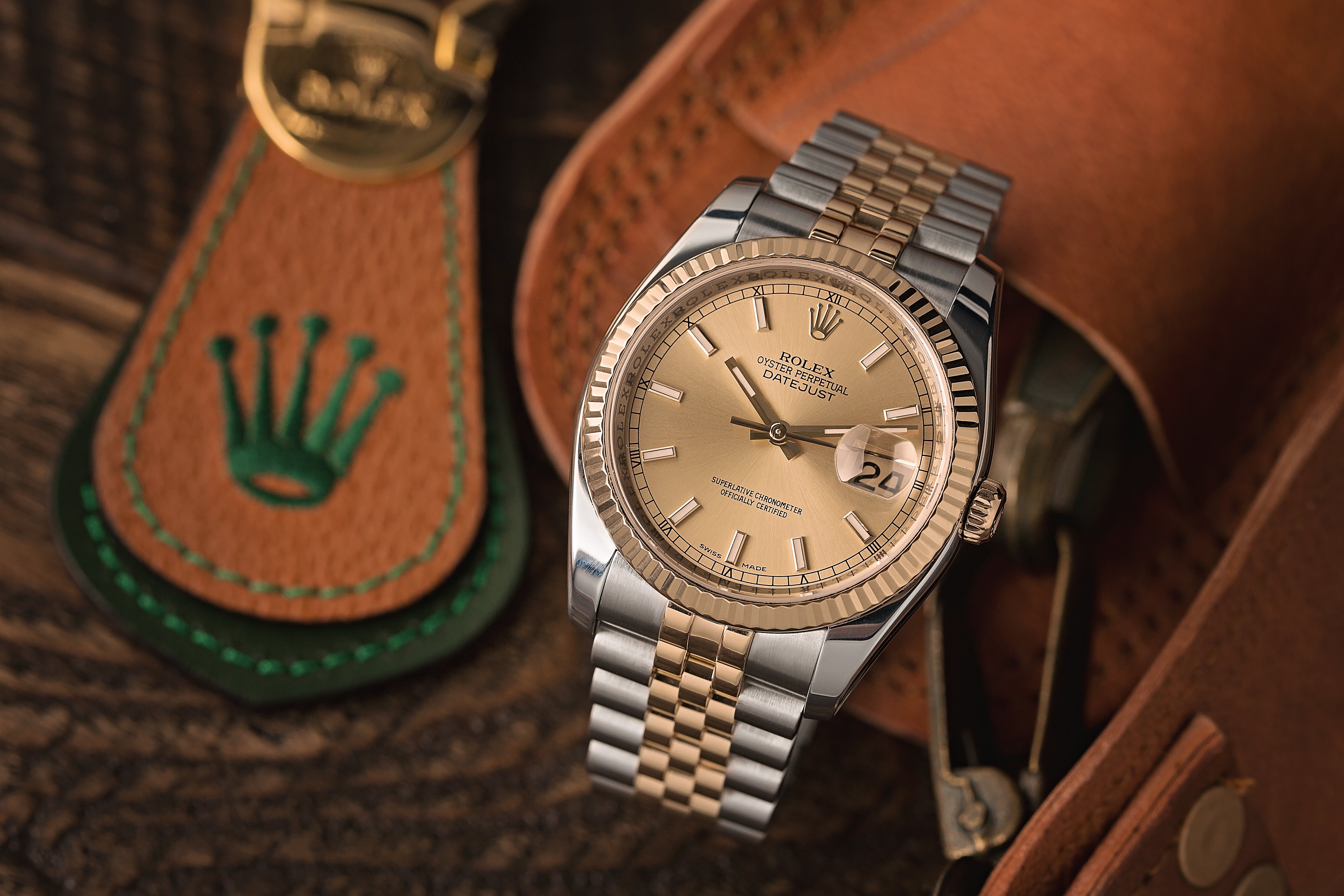
While the 41mm Datejust II satisfied the public's request for a larger watch, the new timepiece didn't immediately catch on. After several short years, the plug was pulled on the Datejust II collection. However, Rolex's over-sized Datejust resurfaced in 2016 under the Datejust 41 name, with a new reference number, a new movement, and minor aesthetic revisions.
The Datejust 41 continues to remain in production today alongside its various siblings ranging in size from 28mm to 41mm, and it is available in a wide variety of different metal combinations. Additionally, the Datejust collection is available with more dial, bezel, and bracelet options than any other line of Rolex watches, guaranteeing that there is a perfect Rolex Datejust for just about every wrist size and aesthetic preference.
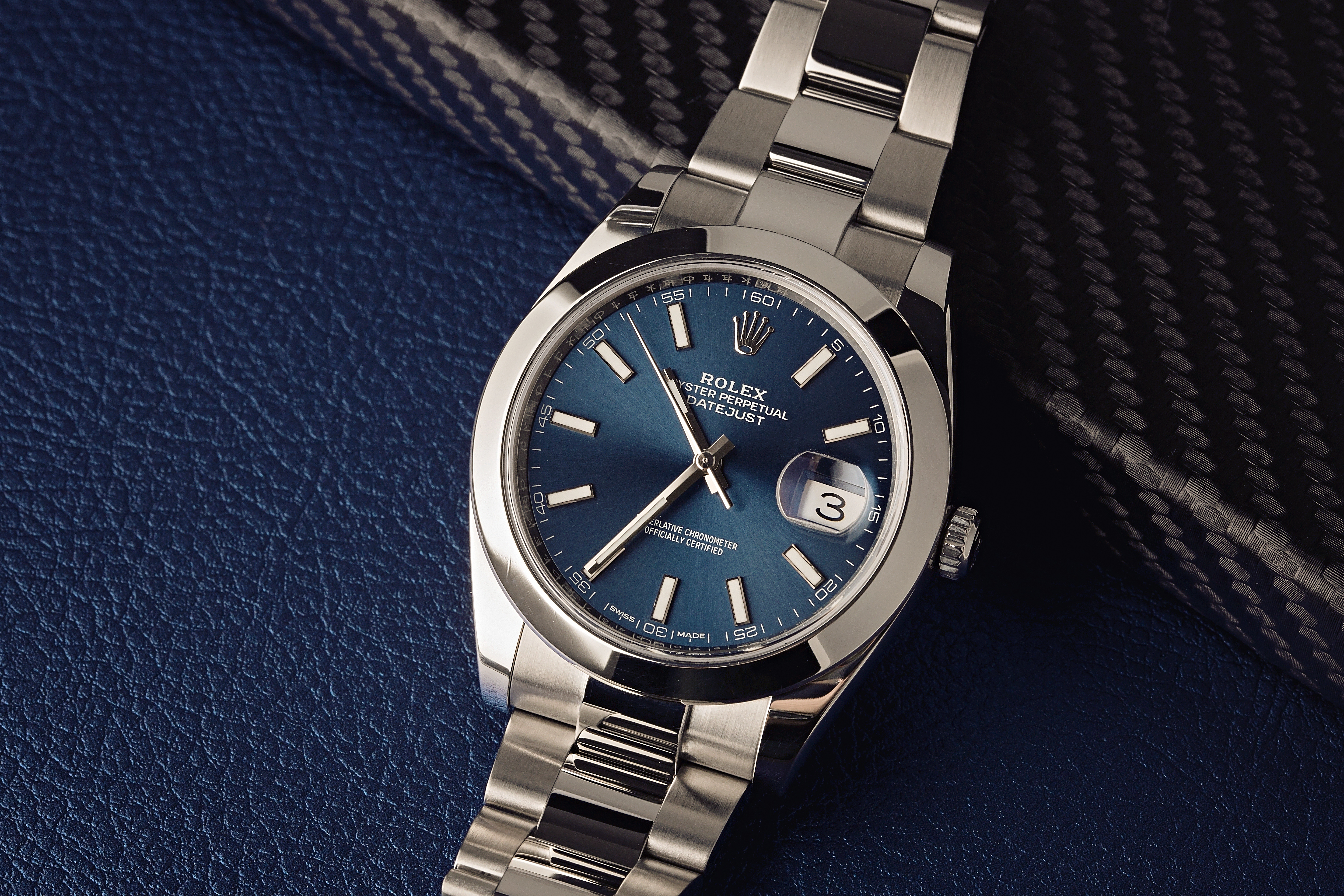
With over two decades of experience in the luxury watch industry, the Bob's Watches Editorial Team stands at the forefront of watch expertise and insight. Our team, composed of seasoned watch enthusiasts, skilled horologists, and knowledgeable industry insiders, is dedicated to bringing you the latest and most accurate information in the world of luxury timepieces. We pride ourselves on our meticulous attention to detail and our unwavering commitment to authenticity. Our editorial content is a reflection of our passion for luxury watches and our dedication to providing our readers with comprehensive, unbiased, and up-to-date information. Our expertise spans a wide range of topics, including in-depth reviews of the latest models, historical retrospectives of iconic timepieces, and insightful analyses of market trends. We are also renowned for our detailed guides on watch maintenance and investment advice, making us a trusted resource for both seasoned collectors and new enthusiasts alike. As thought leaders in the watch industry, we understand the importance of staying ahead of the curve. That's why we continually update our knowledge and skills, ensuring that our readers receive the most current and relevant information. Whether you're seeking advice on your next luxury watch purchase or looking to deepen your understanding of watch craftsmanship, the Bob's Watches Editorial Team is here to guide you.